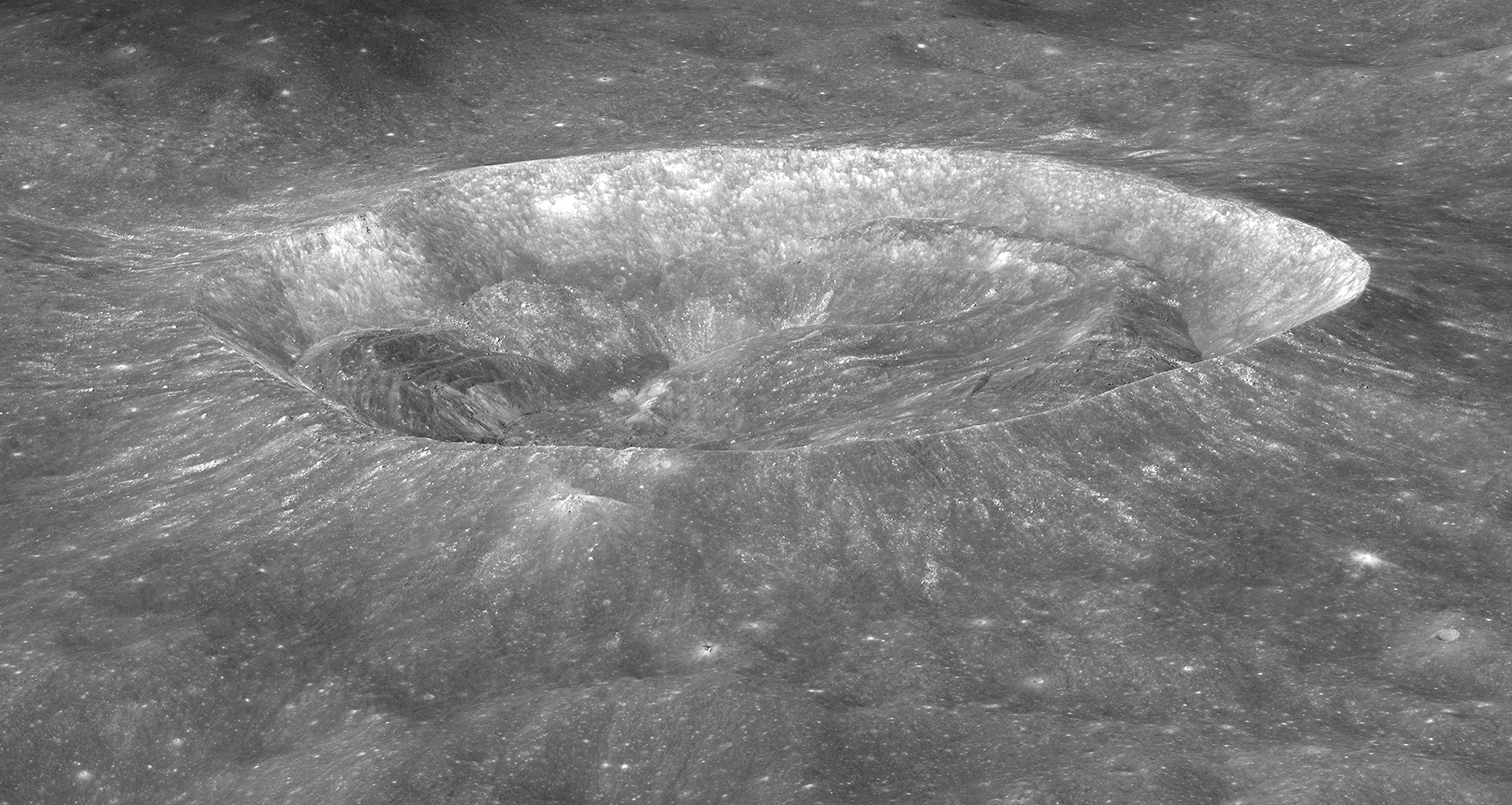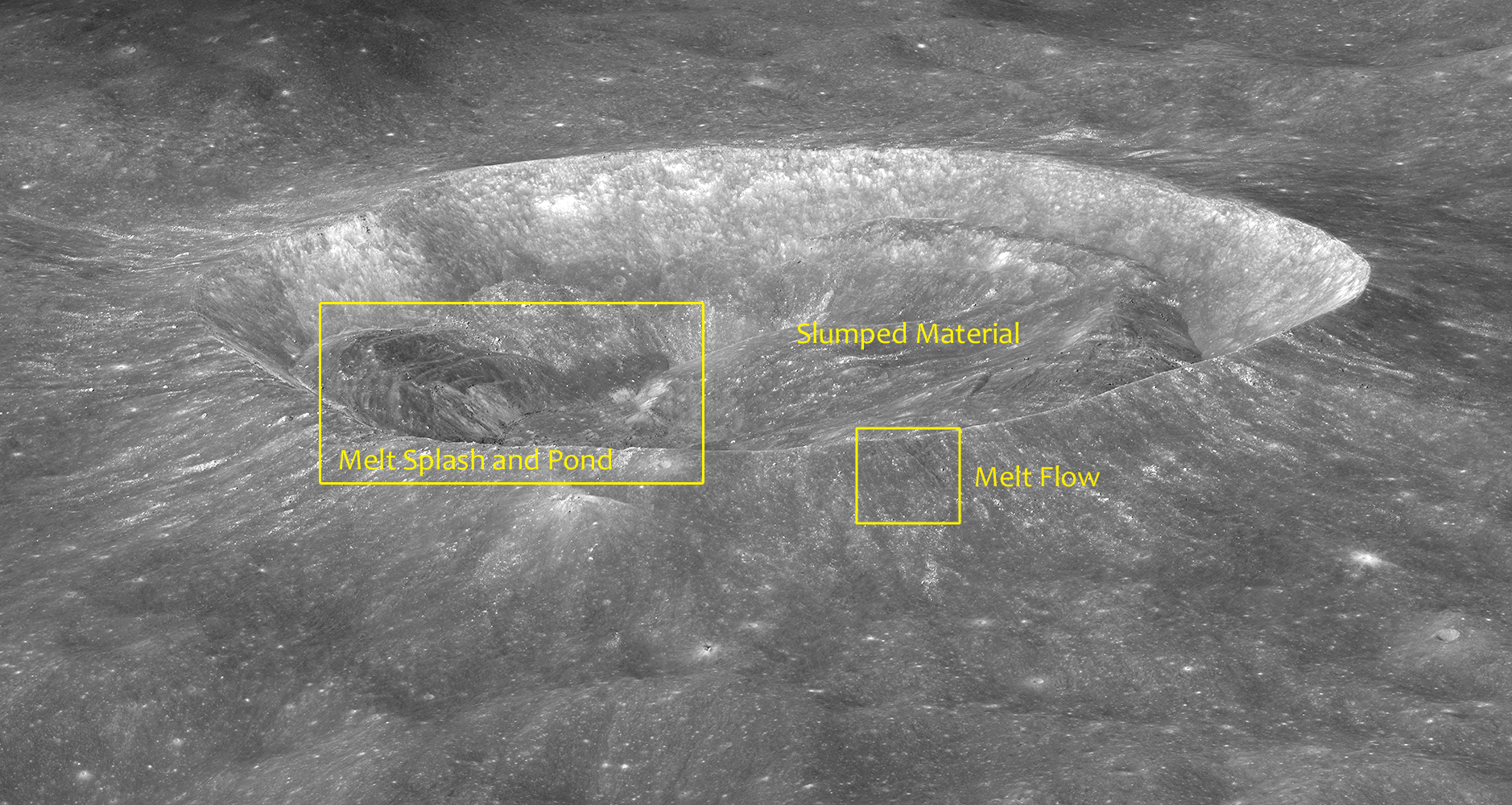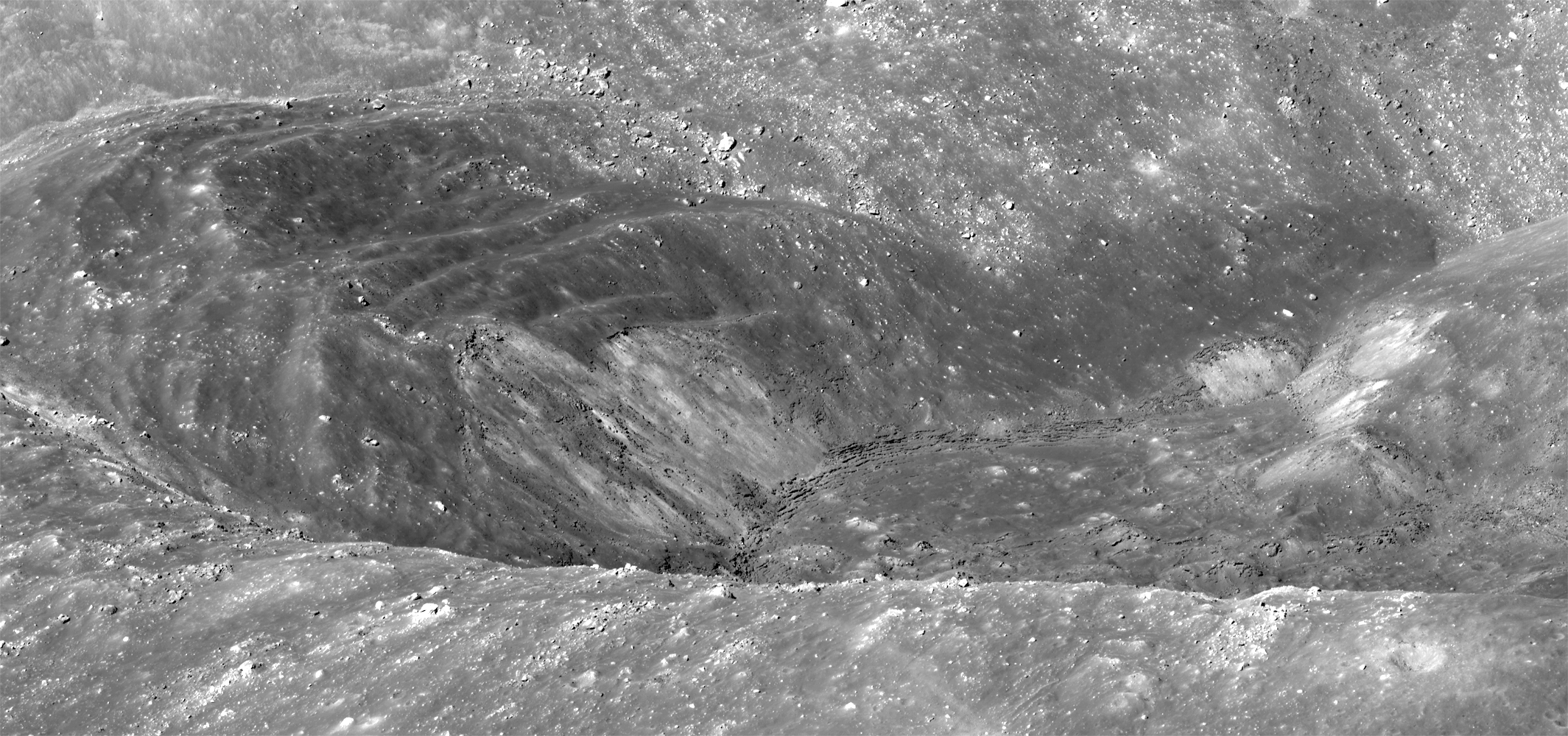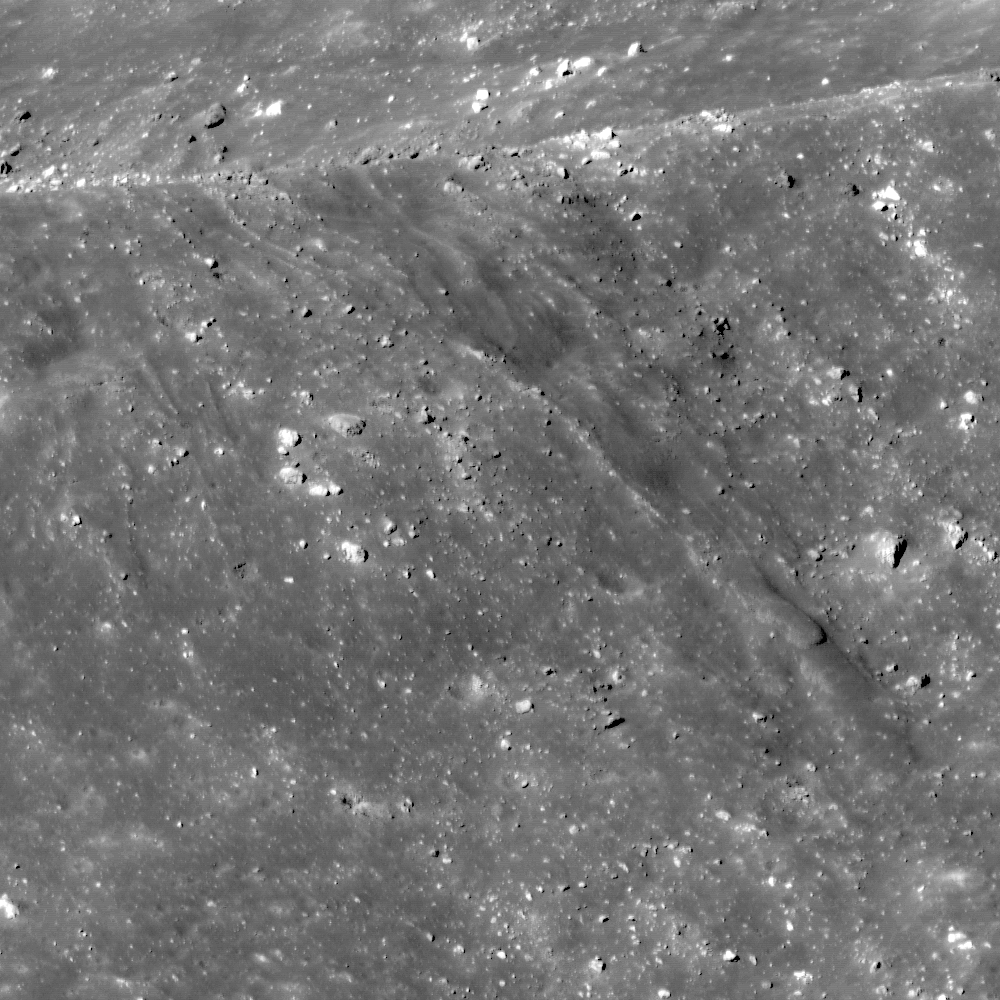
Larmor Q is sub-circular crater, whose diameter is 23 km measured north to south and 19 km measured east to west. But Larmor Q is not just another stunning crater; it is also scientifically interesting, too! Oblique images, like the one below, provide a unique vantage point that can help with geologic interpretation.
One of the most obvious features of Larmor Q is the large accumulation of slumped wall materials inside the crater. This crater is a transitional morphology between smaller simple craters like this one and larger, complex craters like Tycho or Copernicus. The crater Giordano Bruno (21 km in diameter) is another example of a transitional crater. Wall slumping in transitional craters affects the final crater shape. When the northern wall of Larmor Q failed, the northern rim crest of the crater moved outward, contributing to the larger crater diameter in the north-south direction.
This oblique image of Larmor Q is also useful for studying the distribution of impact melt, which, in turn, can tell us how impact melt is generated and interacts with the forming crater. In Larmor Q, most of the impact melt rock is located inside the crater opposite the largest slumped materials.
There are also several relatively small deposits (flows) of impact melt rock on the crater rim. Because the largest concentration of impact melt occurs opposite the largest slumped materials, we infer that the melt “splashed” up on the southern wall primarily as a result of the slumped material impinging on the crater floor.
The full resolution oblique view of Larmor Q crater contains more fascinating clues of the impact cratering process.
Related Featured Images:
Dense Fractures on the Floor of Larmor Q
The View Inside of a Tilted Crater
Very Oblique View of Giordano Bruno
Published by J. Stopar on 13 May 2014



